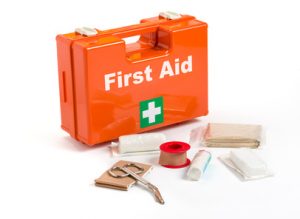Companion Animal First Aid Diploma Level 3
This is a pet first aid course that is relevant for pet owners and for those working hands-on with animals.
Gain valuable knowledge that will enable you to assist companion animals in emergency situations.
Learn about the essential first aid principles and actions to carry out in the event of a range of common incidents.
Our emphasis in this course is on companion animals including cats, dogs, rabbits and guinea pigs.
Unit 1
First Aid Principles
Unit 1 of this pet first aid course covers the principles of first aid. Learn how to assess the essential functions of the body. Learn how to improvise items such as muzzles, stretchers and splints and put together a first aid kit.
Learn guidelines about UK first aid legislation for animals & understand what treatments are allowed under the Veterinary Surgeon’s Act.
Unit 2
Dealing with an injured animal
Learn how to restrain and handle an animal in distress or pain. Learn how to recognise and stabilise fractures in preparation for transporting to a vet. Learn how to recognise and treat shock, collapse and bleeding.
Unit 3
Treating an injury Part 1
Learn how to treat injuries such as: Cuts and grazes, poisons and stings, eye injuries, bite injuries, choking, dislocations, broken bones, convulsions, fainting, heatstroke, burns, electric shock and drowning.
Unit 4
Treating an injury Part 2
Learn how to deal with a foreign body in eye, throat or mouth. Learn about CPR and resuscitation. Learn how to clean wounds and apply dressings and bandages.
Unit 5
Health & hygiene
Understand the causes of animal disease. Learn the best ways of preventing the spread of diseases and infections.
Learn how to recognise the signs of disease and ill health and when to visit the vet. Learn about animal diseases (viral, bacterial, fungal, parasitic, hereditary & those caused by environmental factors).
Learn about the pathways of disease transmission and how to prevent infection & disease transmission. This section includes information about: Basic hygiene; bactericides; fungicides; viricides; sterilisation of equipment & materials; aseptic techniques; safe use of chemicals – hazard symbols, changes to hazard symbols; disposal of waste – hazardous, non-hazardous; Statutory waste regulations.
Unit 6
Recovery & Animal Welfare
The last unit of this course is about aftercare and helping the animal recover.
Learn more about treatments you can give at home without veterinary prescriptions.
Learn about organisations that treat stray animals and owned animals as well as about Emergency Veterinary Centres, Private and Charity treatment centres.
We offer a selection of accredited and employer recognised courses specifically designed for careers working with animals.
If you have any questions about our courses, please contact us.
We’ve assisted many people to achieve their goal to work with animals. Read more about our 5-star reviews and student success stories.
Gain relevant training to achieve your goal to work with animals.


